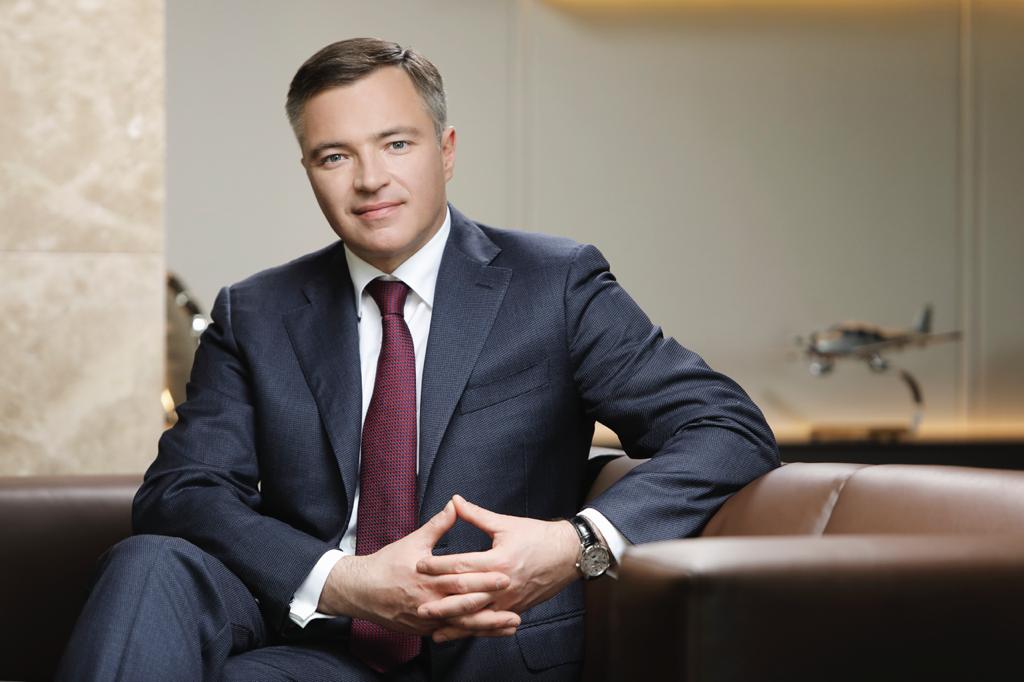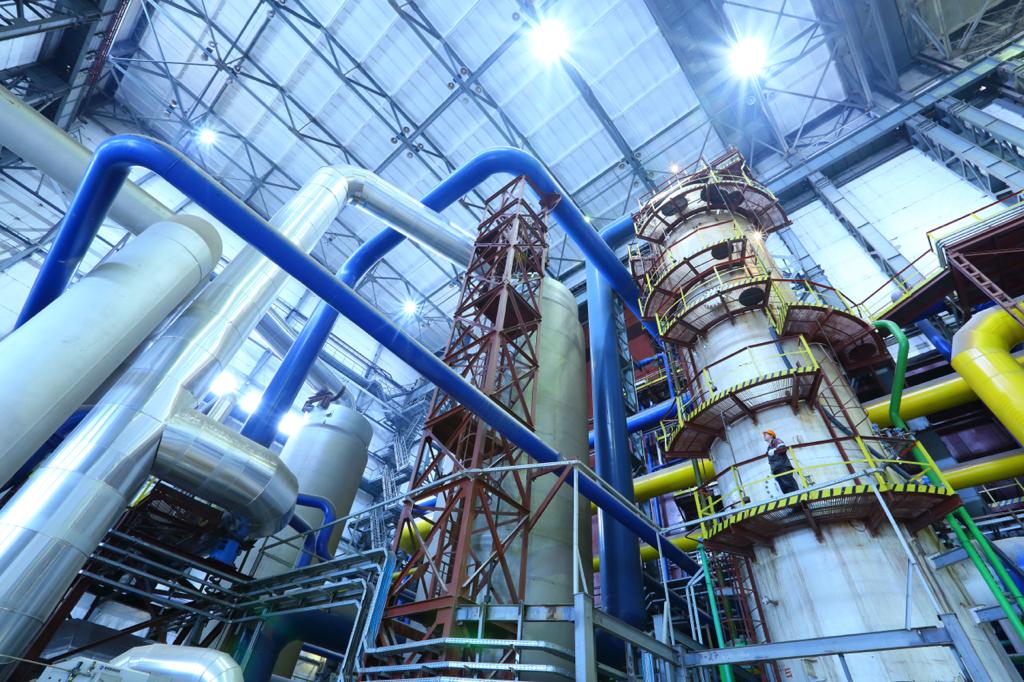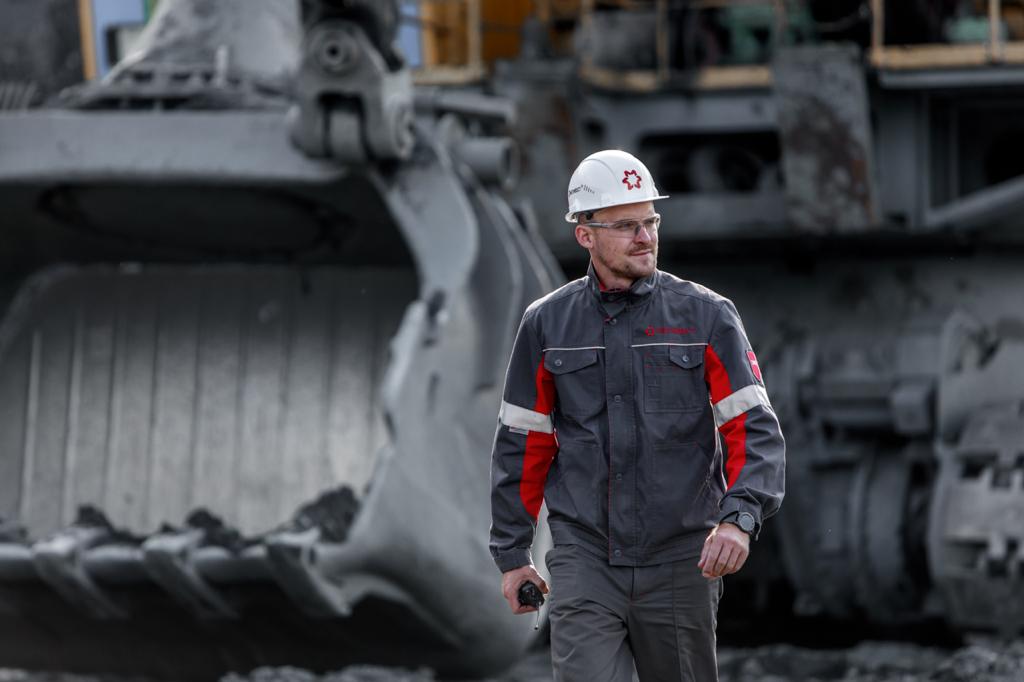The European Green Deal aims to make Europe climate neutral by 2050 through a set of policy objectives, in particular in the energy and construction sectors. 40% of energy consumption comes from buildings, and innovation in the industry is believed to play a major role to help people cut their energy bills.
Yuriy Ryzhenkov, CEO of global steelmaker Metinvest Group, believes the deal is definitely a positive initiative while also emphasising the challenges and its impact on trade.
Having supplied steel for the new Genoa bridge in Italy, The Shard skyscraper in London, Hudson Yards in New York and many other landmarks around the world, Metinvest is an international, vertically integrated group of steel and mining companies with assets in the EU, Ukraine, the UK and the US. Its strategic vision is to become a leading, vertically integrated steel producer in Europe.
Q: Looking back on a turbulent 2020, what were your main challenges and achievements? And what role did the EU market play in your global business?
The EU market accounts for approximately one third of our global sales, and we have four steel re-rolling mills there: in Italy, Bulgaria and the UK. As such, we are a European company with Ukrainian roots. Despite the severe impact of COVID-19 on supply and demand across all commodities in the first half of 2020, and the temporary closure of our Italian mills during the first wave of lockdowns, we still managed to accomplish many significant projects in Europe and elsewhere, protect jobs, ensure the safety of our employees, and achieve a strong finish for the year.
One of the most memorable and emotional projects for us was the new Genoa bridge in Italy, designed by the renowned Genoese architect Renzo Piano and made of steel produced at Metinvest's plants in Italy and Ukraine. We supplied more than 18,000 tonnes of steel for the project in record time, and the new bridge was ready for use in less than a year.
More broadly, I can say that 2020 made us more resilient as a business and as a team. Our products are present in more than 100 countries. Historically, our local market has not been sufficient for our output, so we had to diversify across countries.
This helped us to maintain production volumes and profitability, keep jobs and continue to implement our significant environmental investment programme through the crisis. As the pandemic unfolded, we managed to ensure stability for our employees and overcome negative factors, even though in contrast with the EU and the US, we did not receive much support from the government.
We are now seeing stable growth in almost all of our markets, except for the EU to date. However, we believe that the development of industrial projects in Europe and economic stimulus will lead to a recovery in steel consumption, something that we are already starting to witness.
Q: What exactly do you think will help the EU market to recover? How can it restore demand after the pandemic?
In Ukraine, most of the industries we are connected to have already recovered. In Europe, it depends on the specific country. You cannot look at the European market as a single entity because what works in Italy might not work in Germany, for example.
In Italy, partly thanks to the government’s efforts, the industry is showing signs of recovery due to large, steel-intensive infrastructure projects. A good example is Jonica, a major infrastructure project in southern Italy, which used around 40,000 tonnes of our steel for the construction of highways, tunnels and road viaducts with a total length of 38 kilometres.
The project is a part of the pan-European programme TEN-T (Trans-European Transport Network), which aims to connect different regions of the continent with high-quality motorways. I’m confident that large-scale infrastructure projects are what can realistically speed up the recovery of the European steel market and significantly increase demand. Another main driver is the construction sector, which was the least affected by the COVID-19 pandemic and might thrive with the right economic stimulus.
Q: Speaking of recovery in the broader sense of the word, many companies and countries have recently pledged to become carbon-neutral by 2050 under the European Green Deal initiative. What effect do you think it will have on the steel industry and EU-Ukraine relations?
On one hand, there is a global trend and general desire to make the economy more carbon-neutral, and the steel industry is playing a central role here. However, to reach net zero by 2050, Ukraine and its businesses will need tremendous financial help. Unlike many EU companies that have been receiving support from the European Commission to modernise and become greener, Ukrainian ones have to finance their modernisation projects on their own, as there is no state aid available.
To give an example from our business: last year alone, Metinvest completed core works of the largest environmental project in Ukraine’s history – the reconstruction of Ilyich Steel’s sinter plant. Active construction has lasted five years, while required investments exceed US$160 million, all of which came from our own funds. Altogether we spent more than US$200 million on environmental projects in 2020, and we are planning to exceed that amount this year.
As far as I know, Ukraine's legislation is already being synchronised with EU regulations on the environment and climate. In fact, Ukraine has registered a record fall in CO2 emissions in Europe, and we aim to continue moving forward in this direction. Moreover, I believe that further alignment of Ukraine with the European Green Deal should open access for Ukrainian companies to financial resources to facilitate the modernisation and decarbonisation of its industries.
At the 7th Association Council meeting between the EU and Ukraine on 11 February 2021, the EU welcomed Ukraine's ambition to approximate its policies and legislation with the European Green Deal. There was also discussion regarding such areas of mutual interest as energy efficiency, hydrogen, industry alliances and climate governance architecture. As for the effect on trade, while the European Green Deal is definitely a positive initiative, some of its mechanisms may have a negative impact on trade with the EU and European customers.
I’m talking about the Carbon Border Adjustment Mechanism (CBAM), which may eventually become a new form of trade barrier. Recently the government of Ukraine has indicated its intention to engage with the European Commission regarding CBAM as part of the ongoing EU-Ukraine dialogue. We hope that all potential consequences will be carefully assessed and examined when the EU decides on the final design and scope of CBAM application.
After all, to decarbonise the whole of Europe, efforts will be needed in each specific country, including Ukraine. At the same time, it’s important to ensure that decarbonisation does not lead to deindustrialisation of the EU and Ukraine in particular. In fact, imports from Ukraine are a valuable part of the steel re-roller model, which brings significant value to the EU market. It gives the flexibility to adapt to market fluctuations, preserves numerous production facilities and creates thousands of jobs for EU steel workers. As such, Ukraine’s full integration with the EU steel supply chain will only make the EU market stronger and more resilient to external shocks.
Q: Will Metinvest also announce plans to achieve carbon neutrality?
Making statements is the easy part. But what about action plans? While it’s important to have good intentions and commit to a greater cause, it’s vital to have realistic expectations of the actual steps to be taken towards that goal and the resources available, lest the pledges should sound like populism. Metinvest takes responsibility for every commitment it makes. All of our statements on the environment are backed up by a step-by-step action plan stating how much we can reduce and at what cost. Metinvest’s 10-year roadmap to reduce its CO2 emissions is under development now. Once we have an understanding of how we could become carbon-neutral, we will announce it.
Q: You mentioned that 2020 made your business more resilient. How can you explain the growth given the pandemic?
In 2018-19, we carried out a major reset of our general operational efficiency system and, in 2020, we witnessed the results. For instance, we increased the efficiency of raw material and energy consumption, improved equipment productivity, streamlined logistics, enhanced the product mix and more. It was quite a leap. That's why we are continuing to grow. It's what has made us resilient. There were so many crises in recent years that we are already used to them.
We do not perceive the crisis as a crisis, but as a new environment, and we are looking for a new way to grow in this environment. There is engagement at every level. Employees are ready to withstand any crisis, on one hand, and to be flexible enough to adapt and continue developing in new conditions, on the other. Recent years have taught us exactly how to live in such an uncertain situation while maintaining stability within the Group.
Were it not for our operational efficiency actions and the improvements made in 2020 compared with 2019, we would have much lower profitability. We have been actively experimenting with digital technologies to increase the efficiency of operations. Over the last three years, Metinvest's lean manufacturing initiatives have achieved more than half a billion US dollars in savings. The market can go up and down. The market for steel was bad last year, but for iron ore it was quite good. It is widely believed that if a company is vertically integrated, it is less exposed to changes in the market.
While we are fully self-sufficient in iron ore, our own coal covers only part of our requirements. Everything else we take from the market. When steel and ore prices go up, usually the cost of the raw material basket necessary for production goes up with it. So, when the market grows, our expenses increase as well because they are directly affected by external market conditions. And it’s internal efficiency and efficiency of the Group itself that generates profit.
Q: What are your plans and aspirations for 2021? What is in the pipeline?
This year marks our 15th anniversary and we will implement our large-scale investment programme: crucial investment projects aimed at development and internal efficiency, but also at the future. This will be a major highlight. At the same time, we’ll continue investing in our environmental projects to reduce our carbon footprint, as this is a vital part of our ESG agenda. In 2021, we also expect to maintain all of the operational improvements made in 2020 and build on them significantly. The focus will be not just on production – mining and steelmaking – but also on efficiency in procurement, sales and talent management.
The Brussels Times



